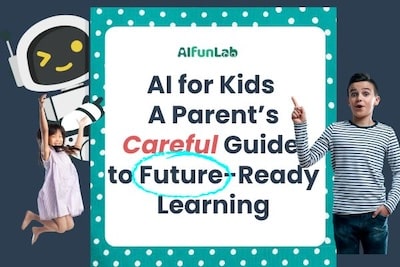In 2025, countries like China, South Korea, and India are no longer just preparing students for the digital age—they’re already teaching it. Elementary school kids across Asia are learning the basics of artificial intelligence, machine learning, and robotics, in classrooms powered by national policy, tech industry partnerships, and a global sense of urgency. This shift isn’t just about staying competitive—it's about preparing children for a world where AI fluency is as essential as reading or math. And it’s happening faster than many parents might expect.
1. China: Pioneering AI Education from Elementary School
China has taken a bold step by mandating AI education across all primary and secondary schools starting September 1, 2025. Students as young as six will receive at least eight hours of AI instruction annually, focusing on foundational concepts and practical applications. The curriculum is designed to evolve with students' progression, introducing more complex topics like machine learning and robotics in higher grades

2. South Korea: Embracing AI-Powered Learning Tools
South Korea is integrating AI into classrooms through AI-powered digital textbooks, set to be introduced in 2025 for students as young as eight. These textbooks aim to personalize learning experiences, adapting to each student's pace and understanding. Despite some parental concerns about increased screen time, the initiative reflects South Korea's commitment to modernizing education and fostering innovation .
3. India: Integrating AI into School Curricula
India is gradually incorporating AI into its education system, aligning with the National Education Policy 2020. From the 2025-26 academic year, the CISCE board will introduce AI and robotics as part of its curriculum. Additionally, the Central Board of Secondary Education (CBSE) has developed an AI Facilitator Handbook in collaboration with Intel, providing educators with comprehensive training materials and real-life examples
4. The Importance of Early AI Education
Early exposure to AI concepts is crucial in preparing students for a future dominated by technology. Understanding AI from a young age fosters critical thinking, problem-solving, and adaptability. Countries investing in AI education aim to cultivate a generation capable of navigating and contributing to an AI-driven world.
5. Bridging the Gap with Smart Robots for Kids
For parents and educators seeking to introduce AI concepts at home, smart robots for kids offer an interactive and engaging solution. These robotic kits for kids not only make learning fun but also provide hands-on experience with programming and problem-solving. Incorporating the best robot toy into a child's learning routine can spark curiosity and lay the foundation for future STEM pursuits.
6. Pros and Cons of AI Education
While AI education presents numerous benefits, it's essential to consider its potential drawbacks:
Pros:
- Personalized Learning: AI can tailor educational content to individual student needs.
- Enhanced Engagement: Interactive tools can make learning more engaging.
- Skill Development: Early exposure to AI fosters critical thinking and problem-solving skills.
Cons:
- Overreliance on Technology: Excessive use may hinder the development of fundamental skills.
- Data Privacy Concerns: Handling student data requires stringent security measures.
- Equity Issues: Access to AI tools may be limited in underprivileged areas.
7. Exploring Free AI Games
To supplement formal education, free AI games can be an excellent resource for children to explore AI concepts in a playful environment. These games often involve problem-solving tasks, teaching basic programming logic and decision-making skills.

8. Taking the Next Step
As AI becomes an integral part of global education systems, it's imperative for parents and educators to proactively introduce these concepts to children. Utilizing smart robots for kids and exploring free AI games can make this transition seamless and enjoyable. By embracing these tools, we can prepare the younger generation for a future where AI literacy is not just an advantage but a necessity.
9. Top Smart Robots for Kids in 2025: Hands-On AI Learning at Home
Now that we've explored how countries like China, South Korea, and India are advancing AI education at the national level, you might be wondering: what can I do at home?
Fortunately, the market in 2025 offers a range of innovative smart robots for kids that bring artificial intelligence, coding, and robotics into your living room. These aren't just toys—they're tools for building STEM foundations through creativity, logic, and play.
Below are the top robotic kits for kids that are making waves this year. These devices are age-appropriate, affordable (with a few premium exceptions), and aligned with what children are already being taught in AI-forward education systems around the world.

10. Miko 3: The AI Companion Robot
- Age Range: 5–10 years
- Key Features: Natural language processing, facial recognition, emotional intelligence training
- Why It Works: Miko 3 personalizes learning experiences with adaptive conversations and educational games. It helps kids learn empathy while introducing them to real-world AI concepts in a friendly, familiar format.
11. Makeblock mBot Neo: A Future Engineer’s Dream
- Age Range: 8+
- Key Features: Drag-and-drop coding interface, AI object recognition, Wi-Fi connectivity
- Why It Works: It goes beyond remote control—it lets kids build, modify, and program intelligent behaviors into their robot. Supports Scratch and Python for beginners and advanced coders.
12. Botley 2.0: Screen-Free Coding
- Age Range: 5+
- Key Features: No screen required, 100+ coding challenges, sound and light feedback
- Why It Works: For younger learners or parents avoiding excess screen time, Botley introduces logic and sequencing without any digital interface.
- Where to Get It: Robotix Education
13. LEGO MINDSTORMS Robot Inventor
- Age Range: 10+
- Key Features: 5-in-1 build options, motors, sensors, Scratch/Python coding
- Why It Works: Perfect for ambitious tinkerers, this kit blends the tactile joy of LEGO with the real coding used in robotics industries.
- Where to Get It: LEGO Official Site
14. Ruko Smart Robot
- Age Range: 4–9 years
- Key Features: Voice control, programmable movements, Bluetooth connectivity
- Why It Works: It’s a great entry-level robot that feels like a friend. Kids can program responses and movements while gaining exposure to voice recognition tech.
15. Final Thoughts: Making AI Learning Part of Everyday Life
Whether you're in Silicon Valley or a rural school district, your child deserves access to the same future-ready tools the world’s most competitive classrooms are starting to use.
As countries invest heavily in classroom AI, parents and educators can support this trend at home with smart robot toys, robotic kits for kids, and free AI games like Quick, Draw! and AI Dungeon.
The best robot toy isn’t just one that moves or talks—it’s the one that gets your child thinking critically, asking questions, and understanding how intelligent machines work.
16. Resources and Next Steps
- 📌 Gallup (2023): STEM Education & Parental Demand
- 📌 U.S. Bureau of Labor Statistics (2023): Robotics Engineer Outlook
- 📌 World Economic Forum: AI and Jobs Future
- 📌 Code.org: Free Beginner Coding
- 📌 Scratch MIT: Learn to Code
- 📌 FIRST LEGO League
- 📌 LEGO MINDSTORMS
- 📌 Shop Miko 3
By starting today, you're not just buying a robot—you’re unlocking a new way for your child to see the world.
For over a decade, I've helped students get into top colleges. I've seen how many treat the acceptance letter as the finish line — but it’s really just the beginning. I also love creative writing and deep reading, and believe kids can be empowered through personalized learning and, ultimately, self-motivation. That belief drives my work at AIFunLab.io. MA in Education from Columbia.



.svg)




















